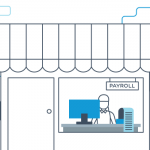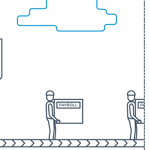The terms “manpower planning” and “human resources planning” are often used interchangeably. Both help companies identify future talent needs and plan ahead to make sure that those skills are available in the workforce. The main difference is that, while manpower planning is skills-based, human resources planning focuses on talent management: Assuming that the skills are available in the workforce, how will employers ensure that they’ll be able to hire and retain the workers who have those skills?

Here’s an example: Let’s say an organization might determine that, in 10 years, there will be a greater need for employees who know how to gather, structure, and analyze Big Data. They then try to forecast how many people who will be in the workforce at that time will have those skills. If there’s a gap, they work with governments, schools, and private organizations to encourage the development of those skills. That’s manpower planning. Human resources planning, on the other hand, would focus on creating a work environment that would be both attractive to and support of those employees.
To sum it up, human resources planning is the how of achieving the goals identified through manpower planning. What does that look like? It depends on a variety of factors, but here are a few possibilities:
- Understanding the priorities of the millennial workforce and constructing HR policies that support those priorities: flextime, remote working, work/life balance, etc.
- The millennial workforce has an unprecedented level of mobility: Research indicates that today’s college graduate will average 12 or more jobs by the time they hit 30. Human resource planning looks at the factors that motivate employees to leave – boredom, lack of a clear purpose, etc. – and implements strategies to counteract those factors. One strategy, for example, could include offering employees the opportunity to explore several different career paths rather than expecting them to settle on one from the moment they’re first hired. Another strategy would be to provide context for the work you ask them to do. While previous generations might have been content to perform tasks simply because they were asked to, the next wave of workers wants to know why it matters: how the tasks you’re asking them to do fit into the overall big picture.
- Many employers have traditionally held a “you’re lucky to be here” attitude toward their employees. Human Resources Planning – making sure you can attract the workers you’ll need for future growth – means switching to a mindset of “we’re so lucky to have you.” Accepting the fact that the ball is in the employee’s court is a critical part of attracting and retaining top talent.
- Another key strategy is to adapt the performance review process to emphasize the value each employee is adding and the opportunities for future growth, rather than coaching on areas that need improvement.
Human resources planning and manpower planning have the same goal: ensuring the organization’s ability to compete in the future marketplace. They just address different sides of the same problem: making sure the skills you need are available in the workforce, and then shaping your work culture to be attractive to the employees who have those skills.







